| Article ID | Journal | Published Year | Pages | File Type |
|---|---|---|---|---|
| 2933751 | International Journal of Cardiology | 2009 | 6 Pages |
PurposeTo assess the effects of the oral intake of flavonoid-rich dark chocolate on coronary circulation, we measured coronary flow velocity reserve (CFVR) by noninvasive transthoracic Doppler echocardiography (TTDE) in healthy adult subjects.Materials and methodsThe study was a randomized, single-blind design conducted for 2 weeks in 39 healthy men (mean age 29.7 ±3.9 years, range 23–40 years). Subjects were randomly assigned a daily intake of either flavonoid-rich dark chocolate (Meiji Black Chocolate 45 g, Meiji Seika kaisya Ltd, including cacao polyphenol 550 mg/day, 200 kcal) or non-flavonoid white chocolate (Meiji White Chocolate 35 g, Meiji Seika kaisya Ltd, including cacao polyphenol 0 mg/day, 140 kcal) as a control. CFVR was recorded by TTDE, and assessed before and after 2 weeks of intake. At the same time, we also assessed serum asymmetric dimethylarginine, 8-isoprostanes, and malondialdehyde-modified low-density lipoprotein (MDA-LDL) as markers of oxidative stress.ResultsFlavonoid-rich dark chocolate consumption significantly improved CFVR (3.38 ± 0.49 before intake, 4.28 ± 0.85 after intake; p < 0.01), whereas non-flavonoid white chocolate consumption did not (3.28 ± 0.49 before intake, 3.16 ± 0.49 after intake; p = 0.44). All predictor variables were used as dependent variables in a multiple regression model of the incremental change in CFVR after 2 weeks of chocolate intake. Intake of dark (but not white) chocolate, MDA-LDL, triglyceride (TG) and heart rate (HR) significantly influenced the change of CFVR after 2 weeks of intake (p < 0.01) according to the multiple regression formula: Y = 1.01X1 − 0.005X2 − 0.003X3 − 0.017X4 (Y = change in CFVR after 2 weeks of chocolate intake, X1 = intake of dark (but not white) chocolate, X2 = MDA-LDL, X3 = TG, X4 = HR).ConclusionFlavonoid-rich dark chocolate intake significantly improved coronary circulation in healthy adults, independent of changes in oxidative stress parameters, blood pressure and lipid profile, whereas non-flavonoid white chocolate had no such effects.
